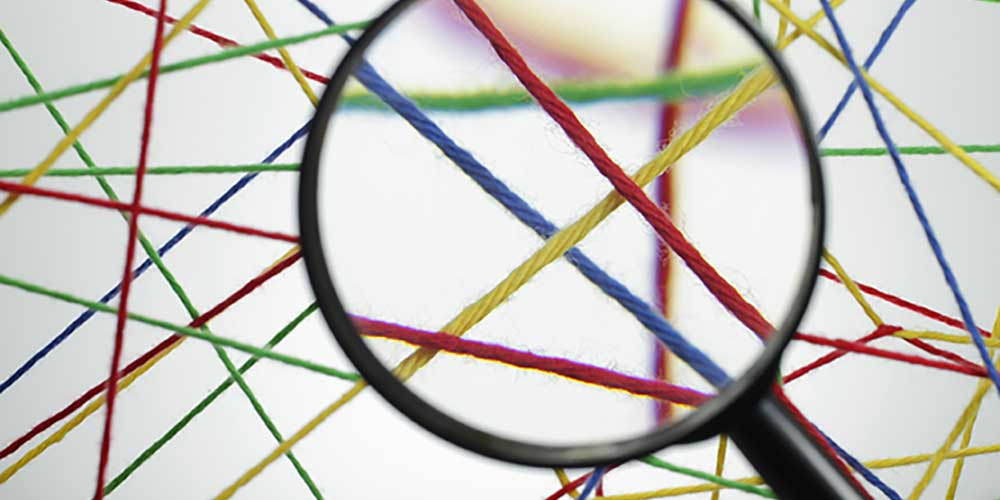Why some teams are more ‘intelligent’ than others
Individual intelligence (g) predicts cognitive performance
Although it can’t claim universal support from psychologists, the notion of individual ‘general intelligence’ is backed by many more than refute it. Countless studies show how performance on a wide range of cognitive tasks is correlated (not just associated!) with general intelligence, known as ‘g’ in the trade. This is as true for the range of different tests in the IQ battery as it is for everyday cognitive tasks that don’t feature in IQ testing.
Intelligence then is also a predictor of performance. Many studies show that ‘g’ accounts for between 30% and 50% of variation in individual performance. What’s more, animal studies also show this effect. One study of outbred laboratory mice, doing mouse IQ tests, showed that 35% of variance in performance was due to the individual animal’s intelligence.
The curious might be wondering, ‘Why outbred lab mice’? Interestingly, animals raised in sterile lab conditions show limited variation in intelligence because their experience is so similar. Outbred animals, on the other hand, are exposed to very varying environments which require and develop a much wider range and depth of cognitive skills. As a quick aside, evidence that nature values and defaults to diversity rather than uniformity.
Collective intelligence (c) predicts team cognitive performance
Just as individual intelligence, ‘g’, measures (and predicts) individual performance on a range of cognitive tasks, collective intelligence, ‘c’, is defined as ‘the ability of a group to perform a wide variety of tasks’.
Given that teams are made up of individuals, it would be reasonable to assume that aggregate individual intelligence plays a role in team performance – and it does. But, it’s less than half that is contributed by a team’s collective intelligence. In one study (since replicated by others), researchers found that ‘c’ accounted for 43% of the variation in performance between teams.
As an example, teams of students with substantially higher ‘c’ than other groups earned significantly higher scores for group assignments than the other teams. Also of interest was the steady improvement that the intelligent teams showed over time, in successive tests. They were capable of retaining and sharing learning. Yet, individuals in those groups didn’t do any better than peers in the wider cohort when it came to assignments completed on their own. Initial collective intelligence research involved teams in face-to-face settings but, realising that more and more teams were working virtually, researchers ran experiments that compared face-to-face and online teams. Notably, even when team members communicated only by text and had never seen or
As an example, teams of students with substantially higher ‘c’ than other groups earned significantly higher scores for group assignments than the other teams. Also of interest was the steady improvement that the intelligent teams showed over time, in successive tests. They were capable of retaining and sharing learning. Yet, individuals in those groups didn’t do any better than peers in the wider cohort when it came to assignments completed on their own. Initial collective intelligence research involved teams in face-to-face settings but, realising that more and more teams were working virtually, researchers ran experiments that compared face-to-face and online teams. Notably, even when team members communicated only by text and had never seen or heard other members (so no idea of physical characteristics or body language etc.), there was evidence of collective intelligence and online teams with greater collective intelligence performed better.
What is collective intelligence?
Although collective intelligence includes a component of individual intelligence, this is by far outweighed by another factor that individuals in the group contribute. It turns out, perhaps rather unsurprisingly, that ‘social perceptiveness’ of individual group members is a strong predictor of ‘c’. Groups with more socially perceptive individuals do better than teams that score lower on the construct.
Studies also show that, in general, women score higher on social perceptiveness than men. This is why increasing the number of women in teams can have such a positive impact on team performance. It is not gender per se, but rather increased social perceptiveness. And, this makes a lot of sense once you reflect that teams are only worthwhile (in a business sense) if they can deliver greater value working collectively than they might if individuals worked alone and then combined their output.
What do teams with collective intelligence do well?
First a confession from the researchers. While they have established that collective intelligence exists, they’re a lot less clear about the skills and behaviours it entails. This is still very much a work in progress, but here’s what they’ve learned to this point.
Communication is critical. There was a lot more spoken communication in face-to-face groups that had high collective intelligence. Similarly, when groups operated only online through text, collectively intelligent groups produced a much greater volume of text messages. These findings sit well with UGM’s core influencing behaviours of ‘communicating’ and ‘listening’. We found that teams deficient in this area were destined to fail – a case of ‘not if, but when’!
Researchers also noted that it wasn’t just that the volume of communication increased. High performing teams shared communication more evenly between group members than lower performing groups. In the lower performing groups, only one or two members dominated airtime and some people didn’t contribute at all.
Groups with higher collective intelligence also distributed the group’s workload more evenly. In essence, these groups were sharing the discussing, the deciding and the doing! This makes a lot of sense, since groups should be expected to deliver synergies from working together that individuals working alone can’t access.
Based on what you’ve learned, how do you rate the collective intelligence of your own teams or groups?
PRACTICAL IDEAS TO APPLY IN YOUR BUSINESS
Way to increase team intelligence
Research doesn’t yet show exactly how you might increase team intelligence but it does give some strong indicators of what might help.
- Monitor the level of communication taking place in the team over time. Can you link outcomes with levels of communication during particular phases, especially those that were challenging?
- Check to see how well the communication is distributed within the team. Do one or two people dominate discussions or is there are more equal distribution of contribution? Aim for a more equal contribution on an ongoing basis.
- Assess the quality of communication within the team. It’s not just about volume, but rather the volume of collectively intelligent communication. You’ll know the difference when you see it.
- Ensure that workload is distributed as evenly as possible. You’ll be better utilising all available skills, talents and energy. And, you’re more likely to have everyone feel that they are able to make a contribution that is valued by the team.



